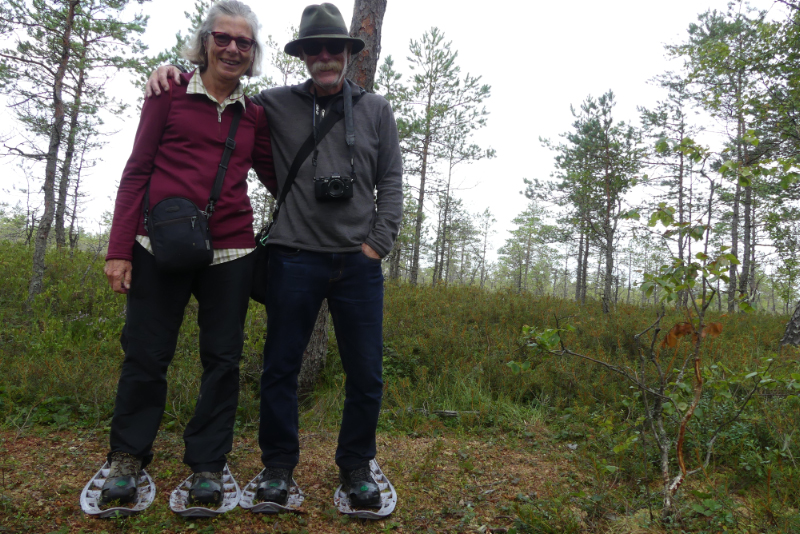Wednesday 6 to Saturday 9 September
Our drive to Gdańsk was slow, due to rain and roadworks. What’s new?
We have used booking.com for accommodation but we were now finding more apartments and less hotels were offered. We don’t know if it is the countries we are in, or because we are booking last minute and that’s all that is left, or if booking.com is trying to compete with AirBnB.
In any case, we were very pleased to find a fresh, clean, modern apartment close to the old city, with a washing machine.
The first thing that caught my eye in Gdańsk was the beautiful gargoyles at the front of the buildings. Of course it was raining, and the gargoyles were delivering the excess water onto the gardens.
We grabbed our umbrellas and walked Ulica Długa the Long Street. In the 1950s much of the city that was destroyed during World War II was rebuilt. Rather than recreate what was destroyed, a decision was made to destroy all traces of German influence and ‘culturally cleanse’ the city. Flemish, Dutch, Italian and French influences were used to replace the historically accurate Germanic architecture which the city was built upon since the 14th century. The buildings along Long Street are beautiful even in the grey rain.
We walked to Dlugi Targ the Long Market, another lovely brick Gothic building. There were lots of sausages on display, well it is Poland.
We found the old mill and the town hall. A statue to the astronomer Jan Heweliusz (1611-1687). Also an artist, he drew detailed images of the constellations and even mapped the moon.
In the afternoon we joined a free town walk ‘Solidarity’ with Kasia (Kate). It was very well run and a great insight into Poland from end of war 1945 to the fall of communism 1989.
Kate started by explaining the state of the city after the Nazis left and the Russians had liberated Poland. Much has been rebuilt. In the ‘Long Street’ facades were reconstructed with modern apartments behind multiple facades. Properties and palaces had been very narrow and long because of a heavy tax on the frontage width.
In the old town new reconstruction was built where the buildings had been destroyed and the architecture was mixed 1950s to 1980s.
There was a strike in 1970 in the ship yard, after the government announced large increases in all foods and goods, by as much as 30% to 40%. This was considered a controlling mechanism – so long as people were hungry they were subservient. The strikers marched to the communist building. The police and military opened fire and several dozen people were killed. The strike and demonstrations led to the downfall of Poland’s communist leader Władysław Gomułka
In 1980 there was further opposition to the communist regime in Poland. Lech Wałęsa suggested that rather than marching, which would risk lives, it would be better to stay in the shipyards. The government met their demands in two days but their wives not satisfied and sent their men back to strike. Twenty-one demands were raised. People came from all over Poland providing support and food. The strike lasted 18 days and ended with a round table meeting of equal numbers of government officials and strikers. All demands were met but the government introduced Marshall Law and imprisoned many of strikers including Lech Wałęsa. It would be another 9 years before Poland won their battle and communism was destroyed in 1989.
Kate would not discuss, but appeared concerned, about politics in Poland at the moment. The current government is trying to pass legislation to increase their power by placing limits on the judicial system. When we were in Krakow in late July the Polish president had blocked the parliament from passing the bill.
It appears that they are also trying to whitewash the impact that Lech Wałęsa had on defeating communism. It’s currently a story repeated by Recep Tayyip Erdoğan in Turkey with respect to Mustafa Kemal Atatürk, and Donald Trump in the USA with respect to Barack Obama.
The shipyards have fallen on hard times, and the output has slowed. A museum at Gate 2 has become a pilgrimage destination.
We took the SKM Rapid Urban Railway train to Gdynia, a younger city and a major port for Poland. The port was built in 1926 and quickly became a major sailing port.
Modernism architecture became popular and the design of new buildings was often sympathetic to that style.
Whilst the port was totally destroyed during World War II, the city survived allowing the modernism style to be retained.
The more popular place for a day visit from Gdańsk appears to be Sopo,t and most day trippers got off the train there and so did we. We quickly realised this was a beach and coffee stop and not our destination, so we had to wait for the next train. Sopot is the third city that makes up the tricity with Gdańsk and Gdinya on either side. It is a more wealthy city with a decent beach promenade.
Gdinya has created a few interesting tourist attractions. Our first stop after the tourist information office was Gdynia Infobox – Observatory of Changes. Its purpose is to allow visitors both local and out of town, to become familiar with new investments. It is a glass lookout built into the side of a building. The information panel shows the location of recent and planned construction. It also provides a view down Skwer Košciuski (Kosciuski Square) and the Southern Pier.
Next we visited the Kamienna Góra Funicular, a free Funicular to the top of Kamienna Hill which offers views of the sea and the city.
We continued down to South Pier and the Passenger Ship Alley where a number of tall ships are moored. Some of them probably haven’t seen the horizon for some time.
I was amused to see the Kapitan Cook Tawerna with a likeness of Captain Cook. The web site certainly acknowledges the man – I wonder if he visited Gdynia?
There is a monument to Józef Teodor Konrad Korzeniowski, (1857 – 1924) also known as John Conrad, Poland’s most famous sea-faring author who wrote his stories in English. No one knows of any connection Conrad had with Gdynia, however it is one of the few monuments to him. A Polish inscription from his novel Lord Jim is translated as There is nothing more enticing, disenchanting, and enslaving than life at sea.
We then meandered around some of the streets made famous for their modernism buildings. And of course, the day deteriorated as drizzle started.
Back in Gdańsk we stopped by the Crane Gate, an amazing 15th century structure that closed the gate to the city walls and also acted as a port crane. It took four workers, usually prisoners, to tread the wooden steps inside the wheel and set it in motion. A little bit like a mouse exercising wheel.
But not all was lost in damp Gdańsk, Bruce found the Labeerynth bar, just around the corner from our apartment, on our last night.
e_header.jpg)














































































